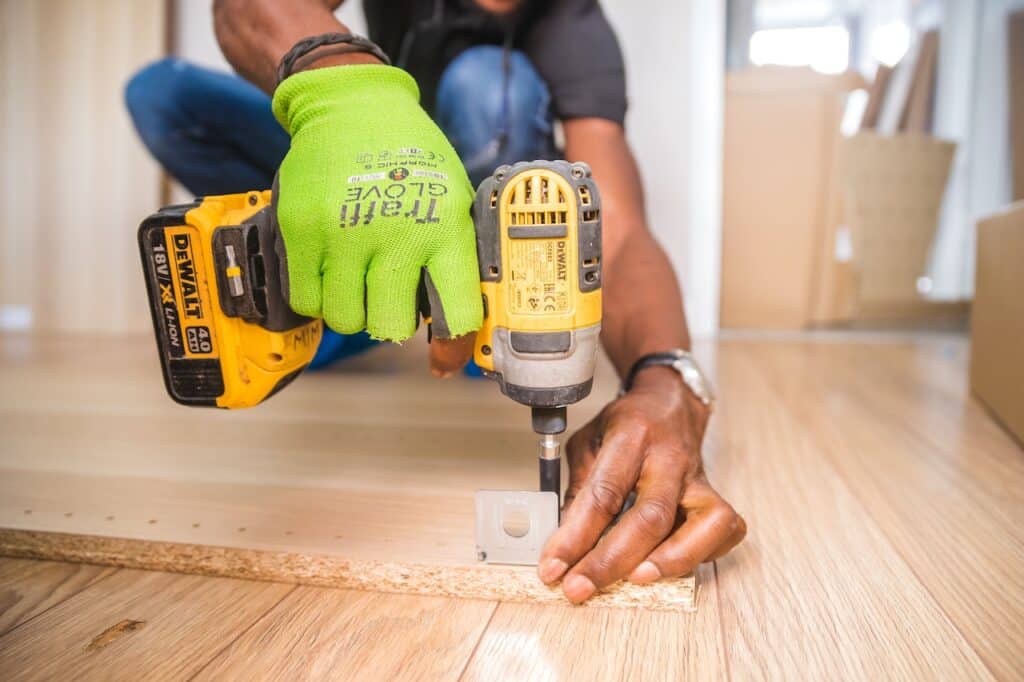
This article explores ten exceptional green building materials that are revolutionizing the way we construct homes, offices, and structures. From renewable resources like bamboo and cork to innovative materials such as recycled steel and hempcrete, each of these choices not only promotes sustainability but also offers a range of benefits, from reduced carbon footprints to enhanced energy efficiency and long-term durability. By embracing these green materials, builders and architects can play a pivotal role in creating a more environmentally friendly and sustainable future for the construction industry and our planet.
Bamboo:
Bamboo is a versatile and sustainable building material known for its strength and rapid growth. Its regenerative properties make it an excellent choice for construction, as it can be harvested without causing long-term harm to the plant. Bamboo is commonly used for flooring, furniture, and even as a structural component in buildings. Its light weight and durability make it an ideal choice for projects aiming to reduce their environmental impact.
Recycled Steel:
Using recycled steel in construction is an eco-conscious choice that reduces the demand for new steel production, which is energy-intensive and has a substantial carbon footprint. Recycled steel maintains its strength and quality, making it a durable option for a variety of building applications, from framing to structural supports. This material not only conserves natural resources but also helps lower greenhouse gas emissions associated with steel production.
Recycled Glass:
Recycled glass finds its place in sustainable construction as a green alternative for countertops, tiles, and decorative elements. By using glass that has been reclaimed and processed into new products, construction can reduce the energy and raw materials required for new glass production. This eco-friendly material adds a touch of creativity and color to architectural designs while promoting resource efficiency.
Reclaimed Wood:
Reclaimed wood provides a unique, character-rich option for sustainable construction. Salvaged from old buildings, barns, and other structures, reclaimed wood helps preserve mature trees and forests by reducing the demand for new timber resources. It can be used in flooring, siding, beams, and decorative accents, offering an aesthetic that’s both environmentally conscious and visually appealing.
Cork:
Cork is a natural and renewable building material that’s often employed in sustainable construction. Harvested from the bark of cork oak trees, this process doesn’t harm the trees themselves, allowing them to regenerate and continue producing cork. Cork is valued for its insulating properties and can be used in flooring and wall coverings, helping to improve energy efficiency and comfort in buildings. Its sustainable sourcing and thermal characteristics make it an attractive option for eco-conscious construction projects.
Hempcrete:
Hempcrete is a sustainable building material made from hemp fibers, lime, and water. It’s known for its lightweight, insulating, and breathable properties, making it a fantastic choice for construction projects. Hempcrete has excellent insulation capabilities, helping maintain comfortable indoor temperatures. Moreover, it’s environmentally friendly, as it’s sourced from the fast-growing hemp plant and doesn’t require energy-intensive manufacturing processes, which significantly reduces its carbon footprint.
Straw Bales:
Straw bales are a natural and eco-friendly building material used in straw bale construction. These bales are typically used for creating thick, well-insulated walls in homes and other structures. Straw is a renewable resource, and straw bale construction provides high levels of insulation, making it energy-efficient and sustainable. It’s also known for its fire resistance and is often used in conjunction with other natural building techniques to create energy-efficient and eco-conscious buildings.
Recycled Plastic:
Recycled plastic offers a durable and sustainable alternative for building materials. Recycled plastic lumber, for instance, can be used for applications such as decking and fencing. By repurposing plastic waste into construction materials, this approach reduces the environmental impact of plastics while creating long-lasting, low-maintenance, and eco-friendly building components.
Green Roofing Materials:
Green roofing materials, including living roofs and reflective roofing options, contribute to sustainable construction in various ways. Living roofs incorporate vegetation, which not only provides an aesthetically pleasing appearance but also helps manage stormwater runoff, reduces the urban heat island effect, and improves building insulation. Reflective roofing materials have high solar reflectance and thermal emittance properties, lowering building cooling needs and energy consumption, making them an eco-conscious choice for sustainable construction.
Rammed Earth:
Rammed earth construction involves compacting natural raw materials like earth, chalk, lime, or gravel to create strong, energy-efficient walls. This technique has been used for centuries and offers excellent thermal mass, helping to stabilize indoor temperatures. Rammed earth is sustainable because it utilizes readily available, local materials, reducing transportation costs and carbon emissions. It also minimizes waste and promotes energy efficiency, making it an appealing choice for environmentally responsible building projects.